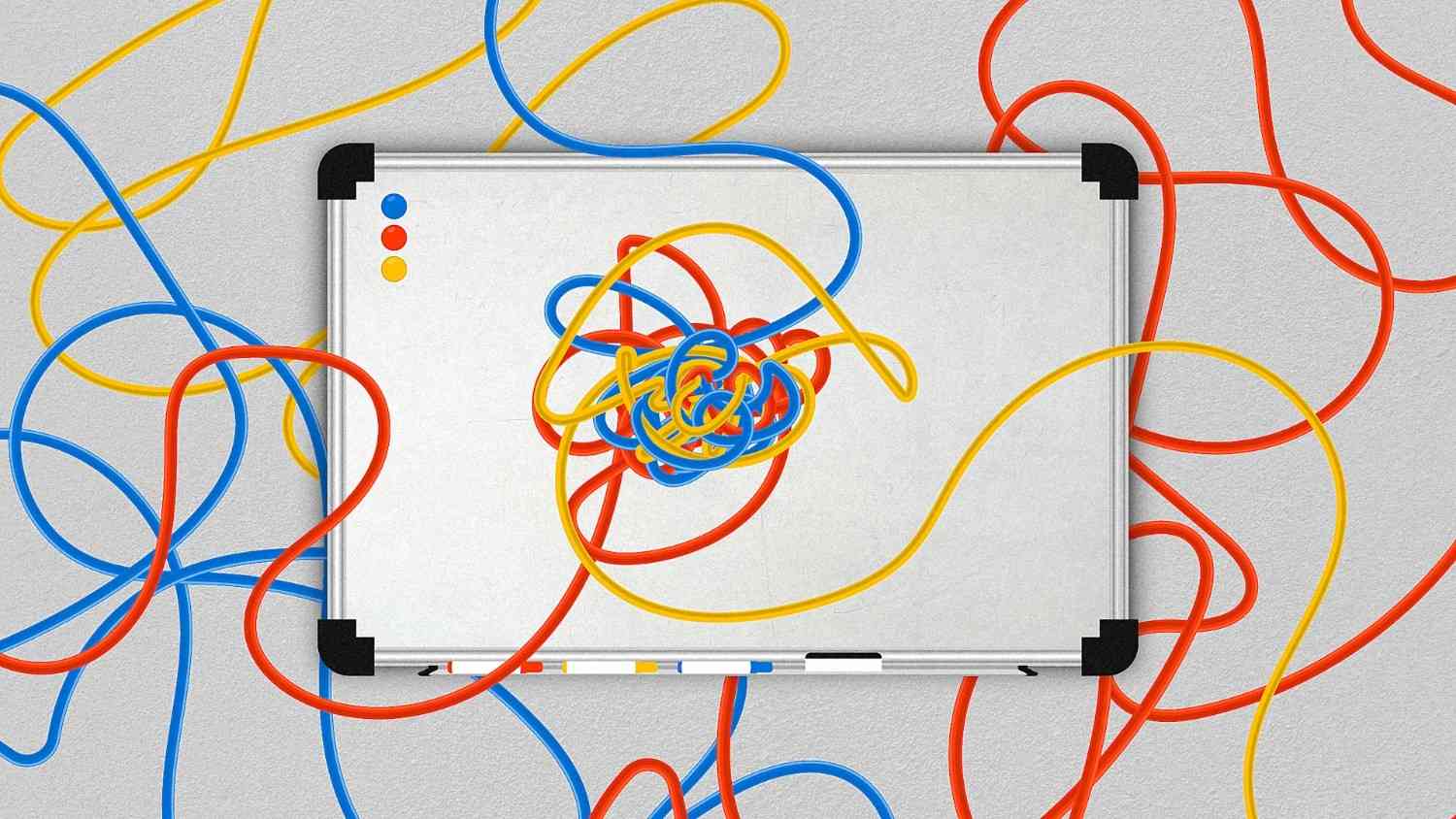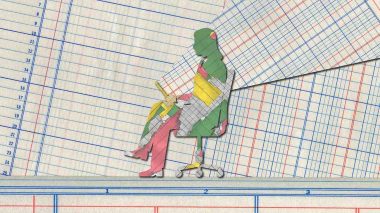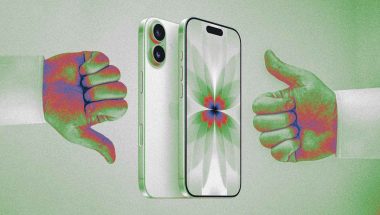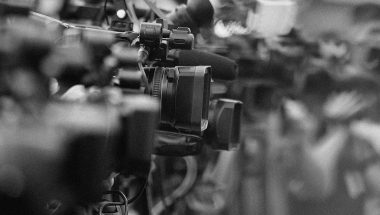- | 8:00 am
‘Winning is everything’: Inside Nike’s Olympic comeback plan
Under CEO John Donahoe, the sneaker giant is heading to the Paris Summer Olympics with something to prove: It may be showing fatigue, but it’s still an innovator.
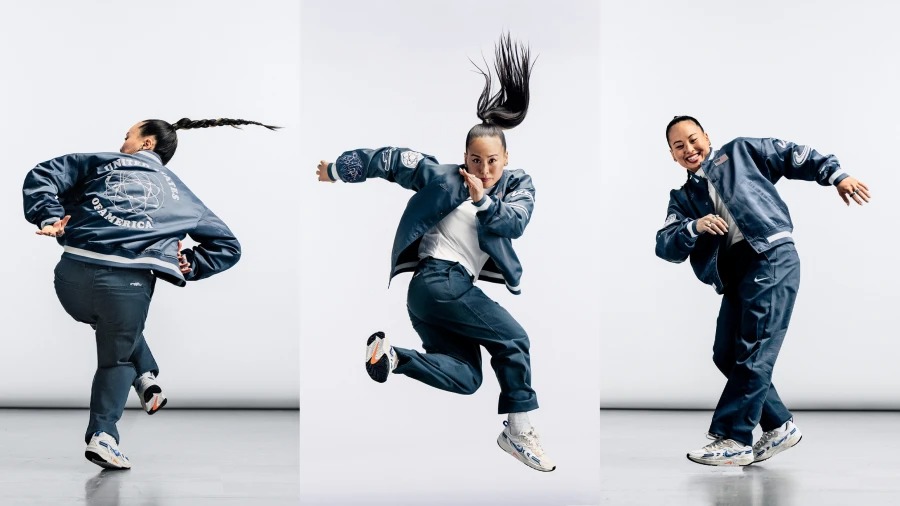
It’s gray season in Beaverton, Oregon. Wet and dank, just warm enough not to be snowing, the moment in March when everyone wearily agrees that winter is supposed to be over. Serena’s tennis court sits empty, speckled with a few dozen fluorescent balls; a “No Walking” sign warns people off Ronaldo’s soccer pitch.
Heidi O’Neill, the company’s president of consumer, product, and brand, sits in front of a window, seven stories high in the Serena Williams building on Nike’s 400-acre global headquarters, discussing the company’s 2024 Olympics strategy. It’s my third time visiting the campus, and she’s the only employee I’ve encountered who is bold enough to eschew the swoosh on her feet, instead opting for black platform ankle boots.
With the Paris Summer Olympics in July, Nike is preparing for its quadrennial big brand moment. It’s sponsoring hundreds of individual athletes plus the U.S. soccer, basketball, and gymnastics teams, among other sports—including, for the first time, breaking (the preferred term for breakdancing). It will use the event to showcase its shoes, alongside team kits and uniforms. To get ready, O’Neill has been figuring out how to align the company around the games. It’s a delicate moment, after all: Just three weeks before my visit, the athleticwear giant sent shockwaves through its corridors—and the markets—when it began laying off 1,500 employees, or 2% of its total staff, in an effort to trim costs.
O’Neill pulls a lightly crumpled piece of paper from her bag. “I’m about to present this to Mark, do you want to hear it?” she asks. It’s a draft of the company’s Olympic manifesto—the internal document that will guide Nike’s marketing strategy for the event and its effort to rally the team in-house. O’Neill explains that Mark Parker, who served as CEO from 2006 to 2020 and replaced founder Phil Knight as executive chairman on Nike’s board, will need to sign off.
O’Neill, a 16-year Nike veteran, was responsible for modernizing the company’s retail strategy with immersive stores. But for a moment, her confidence seems to waver. “You don’t have to say it’s good,” she tells me, before reading aloud.
“Winning is losing in the world. People have decided it’s unhealthy to be so driven. They say it makes others feel uncomfortable. And wanting to do better than someone else is shameful. So they’d rather congratulate you for showing up, tell you ‘enough,’ give you a trophy, and remind you that winning isn’t everything. Clearly, they’ve lost perspective,” she reads. The manifesto posits that it’s time to reclaim the “desire” to win.
“It might make [people] uncomfortable to hear it, but winning is everything,” O’Neill concludes. “And if you don’t believe that, congrats—you’ve already lost.”
It’s a bold and polarizing statement, and it reflects the position Nike finds itself in: feeling the pressure to compete its way out of a moribund patch. To be fair, all of the giants of the athleticwear industry are looking gassed these days as they face supply chain issues and waning consumer demand. But the headwinds have been hitting Nike particularly hard.
The company is still a titan, taking in $51 billion in sales for fiscal year 2023, which ended in May 2023, and $22 billion in gross profit. Even so, its pace has faltered in recent months. In the nine months ending in February 2024, the company grew revenue by just 1% year over year and footwear sales by 2%. Notably, in the world’s largest shoe market, North America, footwear sales were down by 1% over that period. The company is forecasting 1% growth for FY2024 and a single-digit revenue dip for the first half of FY2025. In anticipation, Nike quietly reduced staff in late 2023 before announcing in December that it was cutting $2 billion in costs over the next three years—a move that culminated in the recent layoffs. (The news sent Nike’s stock tumbling; in early April, it was down about 20% for the year, compared to the S&P 500, which was up 10% since January.)
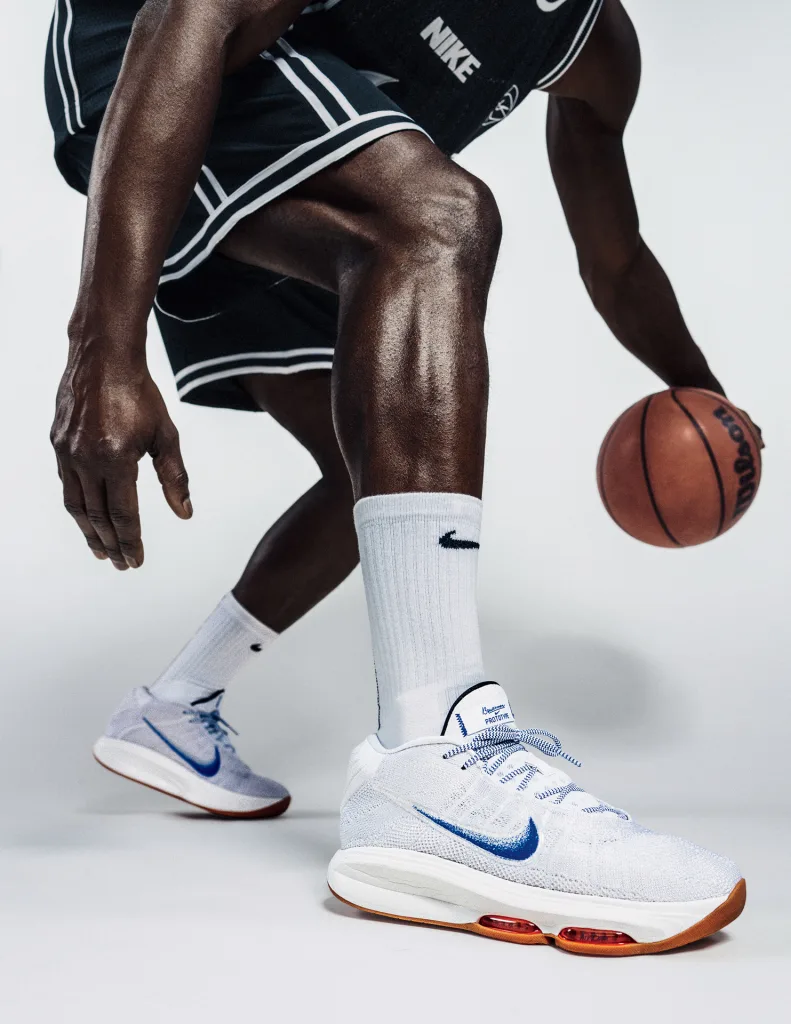
stylist: Eulalie Welsh; hair and makeup: Carrie Strahle; production: Nancy Lichtwardt/Open Range]
This comes even as the company is still adjusting to organizational changes orchestrated by CEO John Donahoe, who succeeded Parker as CEO in January 2020. As he reworked development teams, people with decades of experience left—and those who remained had to grapple with how to propel Nike into the future.
Winning through cutting-edge product design has been Nike’s playbook going back to its earliest days, from introducing grippy Waffle soles (1972) and shoes packed with cushioning Air technology (1978) to debuting 3D-knitted Flyknit uppers (2012) and airplane-foam-and-carbon-fiber Vaporfly running shoes (2017). But 50 years is a long time to lead the pack, and under Donahoe, the company’s greatest windfalls have come from mining the gold of the past—rereleases of Air Force 1s, Dunks, and Jordans—rather than introducing cutting-edge innovations.
It’s a strategy that has led critics to wonder if the legendary design company is losing its touch for product innovation. “Innovation was challenging for the entire industry during COVID,” Donahoe acknowledges, noting that most companies simply sold more of what was already selling. “We don’t apologize for exploiting sneaker culture and the success of three of the largest franchises.”

At the Paris Games, Nike is putting everything into turning this story around. It will promote a new wave of shoes across sports, showcasing updated technologies that Nike’s designers have been developing, behind the scenes, for years. That will kick off what Nike calls a “super cycle” of product releases around Nike Air that will power the company’s product pipeline in the coming years.
A few hours after my meeting with O’Neill, I run into her, racing across campus. She stops, catching her breath. She says she’s just wrapped her multihour meeting with Parker where she presented the Olympics mission statement. I ask her how it went. Her eyes flash: “We’re doing it.”
Donahoe enters the executive lounge dressed in all black save for the four magenta Air bubbles encased like cannoli filling in the soles of his unscuffed Air Max Dns—a walking reminder of the company’s core Air technology.
The sprawling space, in the complex’s Sebastian Coe building (named after the Olympic runner), holds both a conference table and a desk that’s big enough for 10 people to gather around. It was once an office belonging to Parker, who is still revered by most Nike designers, current and former. (Today, he maintains another office in the building.) While Parker was a shoe designer by training and known for working directly with the design teams, Donahoe served as CEO of eBay and management consulting firm Bain & Company, where he spent 23 years. In his four years at Nike, he’s proven to be more of a calculator than a creator.
Donahoe presses a button to drop a shade over the view out the window: a series of buildings constructed in the ’90s, dedicated to players like Michael Jordan and Bo Jackson. As he settles in, Donahoe recounts an early meeting he had with Nike founder Phil Knight where they talked about the company’s never-ending battle for market share. Donahoe recalls Knight saying, “When you look back at Nike, [people think] it was ‘the storied 50 years’!” Donahoe laughs. “No. It was a dogfight.”
Shortly after becoming CEO, Donahoe found himself battling the fallout of the global pandemic. He let 700 employees go, restructured the company’s product- development teams, and poured money into Nike’s disparate digital channels. These moves, along with Donahoe’s strategy of doubling down on those retro rereleases, have been effective in the short term: Nike’s annual revenue has grown by a third since Donahoe took over, even after factoring in the recent slowdown.
The gains, though, have come at a specific cost: the company’s close relationship with running, the sport that Nike cofounder and University of Oregon track coach Bill Bowerman is credited with popularizing with his 1967 book, Jogging. Running-shoe upstarts like Hoka and On may merely nip at Nike’s heels, but they’re drawing some blood. Hoka hit $1.41 billion in sales during its 2023 fiscal year, up 58.5% from the prior year. On surpassed $2 billion in sales in 2023, up 55% for the year. Brooks, meanwhile, overtook Nike as the market leader for adult performance running shoes in the U.S. in 2022—and held that position through 2023, according to data from Circana. In a slow-growth industry like footwear, where single-digit-percentage margins separate Wall Street’s view of success from failure, even small companies can affect a giant.
Nike’s missteps began in 2017, when it announced a big bet on direct-to-consumer sales. It prioritized its own sales apps and those of a handful of larger retailers while cutting ties with thousands of smaller retail locations. The move diminished Nike’s “futures orders” program, which allows retailers to preorder products months in advance, giving the company a cash infusion even before products go on sale. The loss of these small-store relationships had an unfortunate side effect: Nike severed a crucial feedback loop from the businesses closest to its customers.
Donahoe “blew up” Nike’s development structure, the former employee says, streamlining product teams and axing many products. All while people were working from home. “The shift to [organizing around] gender was very much an efficiency play,” the insider explains. Once upon a time, each sport innovation team might make, say, its own shorts, and product lines would balloon. In a gender-first approach, the head of men’s or women’s has license to pare those products back across all sports. The changes “made sense,” the former employee says, but were disruptive.
“We got some things right,” Donahoe now says of the transformation. “Other things we didn’t, and we made adjustments.” The company, he says, has put sports innovation back into focus over the past year. Donahoe has also reprioritized outside retailers in recent months, especially running stores.
Nike believes the shift toward gender-based development—and women in particular—will ultimately woo back runners. For the past 50 years, the company has, for the most part, developed its footwear for men first, starting with the sample size of 9. Today, however, the majority of runners are women, according to Running USA, and now 70% of Nike’s test subjects are women too. “I’ve been wanting to do this since day one,” says O’Neill. “Many of our innovation projects start with women now.”
Two years ago, the company launched its Dreamweaver project, which has a group of 120 women Olympic hopefuls test shoes from Nike and its competitors. Nike has already used their insights to redesign its Alphafly marathon shoe. After the testers complained that it lacked stability, the company added midsole material and widened an internal plate to provide a smoother stride. The result is the Alphafly 3, which incorporates this design in both the women’s and men’s shoes. Nike calls it the world’s leading long-distance running shoe and a key part of its Olympics strategy. A minute after launching in January, the shoe had sold out.
But Nike will have to do more than design better shoes to woo women runners. In April, when the company debuted its Olympic running kits, athletes and fans alike pointed to an apparent double standard: The men’s kits were shown with spandex-style shorts; one of the featured women’s kits was a high-cut leotard that seemed to prioritize appearance over performance. The moment was a stumble for Nike in Paris, before any of its athletes had even hit the track.
Nike’s Sport Research Lab, known around the campus as NSRL, is an 85,000- square-foot light-filled wonder gym. The space features a full-size basketball court, running track, and soccer pitch, where a scaffolding of hundreds of cameras and dozens of force plates track athletes in motion. It also contains metal-doored chambers that resemble meat lockers and can simulate the climate of anywhere on earth while measuring sweat evaporation of humans and robotic mannequins.
Two years ago, Nike assembled a focus group here that included Sunny Choi, the first woman to qualify for the inaugural U.S. Olympic breaking team. For three days, accompanied by a DJ, Choi and a handful of other breakers danced on plates that measured the force of footfalls, profiled their movements with cameras, and studied the wear points on their shoes, while the NSRL team cobbled together experiments in foams and tapes to construct novel footwear tailored to the sport. “It’s kind of like gymnastics, but gymnasts don’t wear shoes,” says Choi. “Gymnasts also flip on a perfect axis all the time, whereas we’re kind of all over the place.”
Since breakers are used to dancing in flat-bottomed skater shoes, Nike’s first-ever breaking shoe—the Nike Jam, launching in summer 2024—doesn’t contain any Air inserts or a thick foam midsole. The top is slick, allowing it to slide easily across the ground. Braille-like nubs on the midsole offer grip when dancers grab their feet. A tiny swoosh is printed upside down, to appear right-side-up during inversions. And the sides of the sole are slightly curved to—gasp—allow the ankle to roll. To enable breakers, Nike literally had to learn to be more flexible.
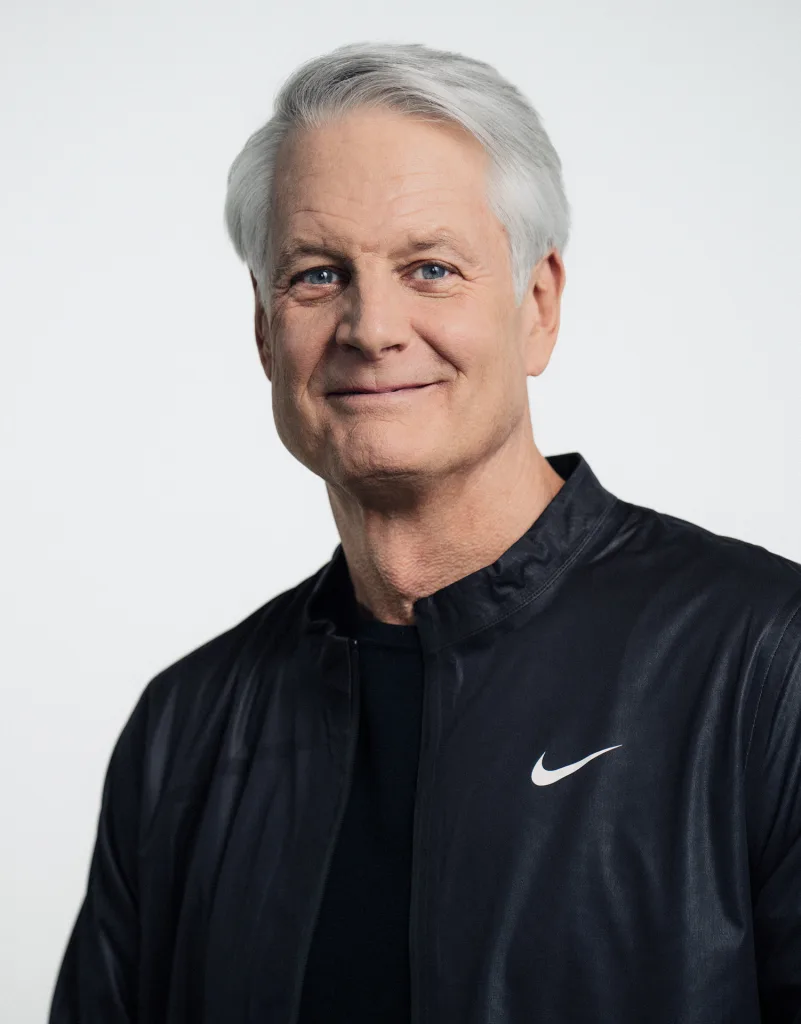
The NSRL is also where Nike developed and tested its other Paris Summer Olympics releases. The company typically uses the games to showcase new innovations, frequently on runners. In London 2012, it introduced its computer-woven Flyknit technology, in an eye-catching neon-green color Nike calls Volt. In 2016, Nike boasted that its Zoom Superfly Elite shoe could shave a 10th of a second off the 100- meter dash, helping to boost revenue by $9.1 billion, or 8%, for the quarter. Four years later, Nike’s Zoom Alphafly Next% “super shoe” was nearly banned from the Tokyo Olympics for giving wearers too great of an advantage. (The shoe was allowed in the postponed event a year later.)
Nike’s advantage during the games is its unparalleled presence, says analyst David Swartz of Morningstar (which was founded by Fast Company’s owner). “I don’t assume [the Olympics] is going to cause any big surge in sales,” says Swartz. “But it’s helpful in terms of [driving] product releases and visibility.”
Nike designers will tell you that a shoe has about five seconds to make an impression, so their designs for Paris have been optimized for both performance and visibility. The Alphafly 3, for example, advertises its speed by showcasing its Zoom Air bags from every angle. A pair of glasses for sprinters that Nike will debut in Paris has extra coverage on the right side to keep wind out of wearers’ eyes during turns. (Runners move counterclockwise around the track, leaving their right side exposed.) “Glasses are usually highly symmetric, so by busting that paradigm . . . it’s like, ‘Wait a minute, what’s she got that I don’t have?’ ” says Hoke.
Martin Lotti, Nike’s chief design officer, has been with the company for six Summer Olympics. For the 2012 games in London, he wanted Nike to stand out, even though it wasn’t a sponsor. So instead of opting to color shoes in the typical red, white, and blue, he put Nike’s Flyknits in that fluorescent green Volt, the most visible color to the human eye. The tactic, dubbed “ambush marketing,” almost caused the International Olympic Committee to sue Nike for grabbing too much unsponsored attention with a single color.
For Paris, Nike is going with a blinding orange colorway, dotted with a retro safari print. The color is a nod to Nike’s orange shoeboxes and its orange Zoom Air bags. But it’s been designed specifically for this Olympics stage. Nike studied the bluish-purple color of the Paris track and determined that orange, which sits opposite blue on the color wheel, will pop off the running surface with maximum contrast.
Sitting on its own, a Nike Air bubble is a pitiful thing, like a kid’s meal toy that’s lost its squeak. But it’s also an engineering marvel, backed by 350 engineers and 500 patents. Stand on top of this nitrogen-filled bubble, and it’s a super balloon that refuses to pop. The more it compresses, smashing into the ground, the more it rebounds, propelling wearers up or forward. And unlike foam, Air doesn’t break down over time.
Nike makes eight types of Air units today, ranging from the oval-shaped bubble in a classic Air Max to the ladder of tubes that appear as four floating orbs in the Air Max Dn—allowing you to look straight through the shoe, with every step appearing to defy gravity. Nike’s Air-infused Olympic shoes include the Mercurial Superfly 10 Elite soccer cleat, which hides a fabric-thin “strobel” Air insert that reduces the loss of energy to grass by 10%, and the G.T. Hustle 3 basketball shoe, which features a large, U-shaped Air bag in front.
“We got more done in Air in the last 36 months than otherwise probably would have taken a decade, because we knew we had to be there for the Olympics,” says Donahoe. He says the Olympics are an opportunity to create “an innovation foundation that can last three years.”

Donahoe explains that product development at Nike is an iterative process that involves mixing and matching its existing technologies—what he calls “innovation platforms”—into new forms. Those include Flyknit (machine-knitted textiles) and Dri-Fit (quick-wicking clothing). The team is currently focused on creating a new generation of products, the so-called super cycle, around Air, arguably its greatest platform.
I get a glimpse of where this super cycle is heading during a meeting with a half dozen designers, including Roger Chen, vice president of NXT Digital Product Creation. NXT (the Nike Exploration Team) works on Nike’s most forward-looking initiatives, planned as far as five years out. Chen walks me into a lab where, for the past three weeks, the team has been creating concept products demonstrating the future of Air. Thankfully, no one has bothered to clean up first.
After a day of brainstorming, the tables stand in beautiful disarray. Twenty designers had gathered around them in a circle: One had been working in VR goggles, another modeled designs on a laptop, and others sketched by hand—some with Sharpies on paper, others with dry-erase markers right onto the table. More than a dozen AI-inspired mood boards ring the room, each dedicated to a Nike athlete, like sprinter Sha’Carri Richardson and soccer star Kylian Mbappé. They’re full of enticingly rendered shoe and clothing designs.
While Nike has spent the last decade using computational design to transform foot strikes into tread patterns, shave weight off sprinting spikes, and optimize the stretch and breathe zones of garments, the company is now embracing generative design tools to kick-start new ideas even more quickly. Hoke says that after he tried OpenAI’s Dall-E image-generating tool in beta four years ago, he didn’t sleep for three nights.
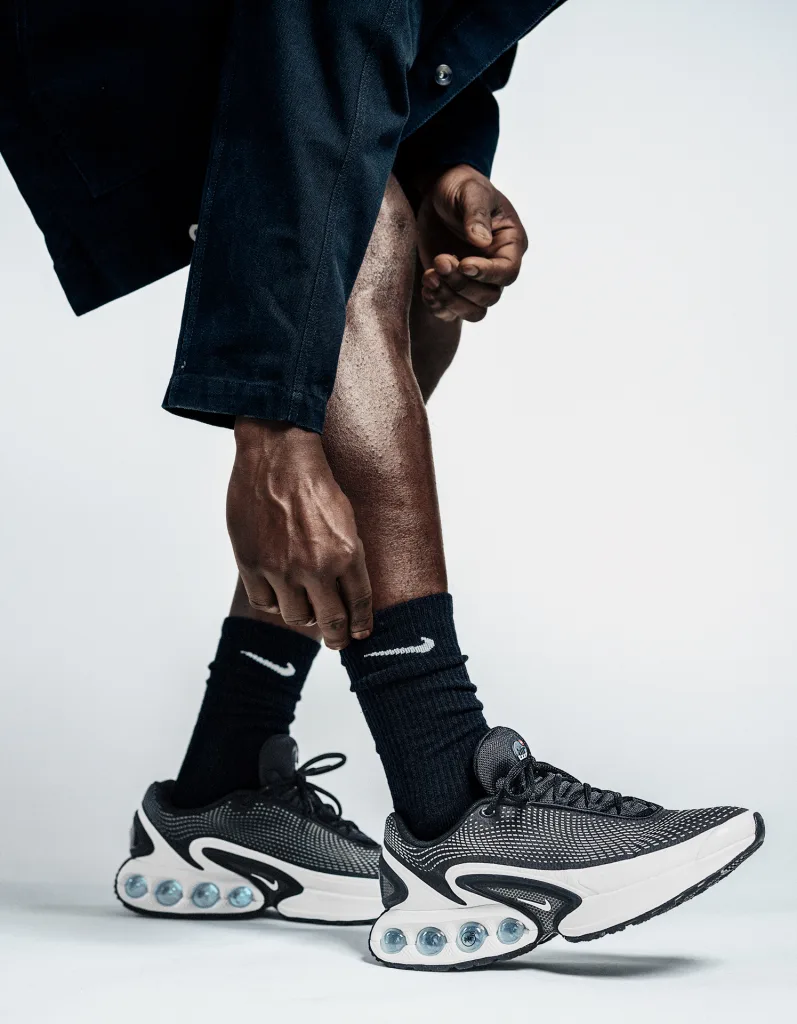
“I think we’re on a precipice, and it’s this complete pivot to absolute creativity,” he says. He calls generative AI “my imagination on rocket fuel. My main job in the future [will be] discernment, watching and learning and seeing how it responds to me.”
Nike has been developing its own proprietary AI platform, called Blackbox, for shoe designs. It allows designers to invent and tweak a 3D shape almost instantly. The designs it comes up with are more inspirational sculpture than actual shoe, an anchor for the design team to riff upon as they take those files into their design tools of choice. But within hours, Nike can not only create a detailed shoe form with this method, it can also send the design to computational engineers, who can then validate its performance attributes. For an industry that’s still anchored in an 18-month product-development cycle, the speed of this work is a generational leap.
The worry, of course, is that Nike will get stuck in a recursive loop: an AI that dreams up more and more Jordan rereleases. The designs on those NXT mood boards, however, suggest otherwise. They’re less Paris Olympics, more Paris Fashion Week. Richardson, Mbappé, and the other athletes appear like haute couture superheroes: Some wear glasses made of Air; one is in a dress coiled by Air, like a dragon’s tail; another dons Air-filled blade shoes that cantilever, with no heel.
After the Paris Summer Olympics, Donahoe says, the world will finally see the full scope of what Nike’s been doing. “Just when everyone’s counted Nike out— boom—we do what we’ve done repeatedly over our 50 years,” he says, “which is something bold, new, disruptive, and we change the game.”
At most companies, these wild images would be mere fictions. At Nike, they’re a vision for where sneakers and all their performance parts can go: Nike’s grand plan to break free of the pack again.













